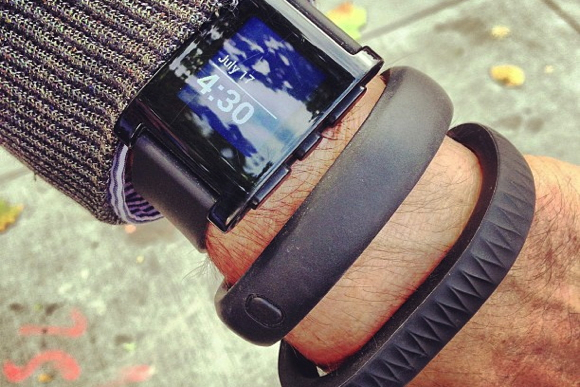Here we are, a few years into the market for wrist-based wearable technology and I thought it would be helpful to check in on what we are seeing.
Unquestionably, the market for smart (like a smartwatch) and basic (like a Fitbit Charge HR) remains one solely focused on health and fitness enthusiasts. The problem with the market today is it simply is not very large compared to other categories. Based on a health study we did, where we were able to segment consumers around some health and fitness related themes, we concluded the total addressable market for health and fitness tech is about ~18% of consumers who are a target profile. In absolute terms, if 18% of consumers in more mature markets are the only targets for these products, we are talking about a market size of only around 200-250 million. Not bad, but not huge. In fact, I’ve reconciled the market for these type of wearables, including smartwatches, and it may not be as large as I thought initially. It’s one of several scenarios on market size I have gamed out.
When we look at wearables at large and try to make educated guesses or forecasts of where the market may go, we include things like smart clothing, ear-based smart tech, enterprise-focused smart tech, and a range of other smart tech which may sit on our person. Overall, depending on how the category gets further defined, it could seem large if we just look at the top line forecast. However, it will be a highly segmented market by type of wearable.
Right now, the market is dominated by wrist-based fitness and smartwatches. I’ve been maintaining a model on this market for a while and recently updated it with how I think the Fall and Holiday quarters will go. Below is my model of wrist-based smart tech by vendor.
For those of you who keep a close eye on the market, you will note our estimates agree with the sentiment that Fitbit still leads the category. We do not believe this will always be the case but it is today.
Apple and Fitbit do most of the volume on a per quarter basis with Apple leading the category in profit and ASP. Xiaomi has been hanging in there, mostly in China, but I still maintain that, at sub $20, it is surprising they are not selling more than they do. At that price, I’d actually consider ~3m a quarter to not be successful. This is either a criticism of the category in China or their brand. I’m not sure which one.
We see a strong holiday for Fitbit and Apple on the back of the new product lineups and aggressive promotional pricing by retailers. The health and fitness angle Apple and Fitbit are focusing on still leaves head room to grow in this space. But I emphasize, if we can’t break out broader consumer use cases, this market will not be much larger than it is now.
With smartwatches, which we think are general purpose wearable computing devices, we see much more potential than basic fitness devices. Our upside forecast of the market depends on consumers embracing the value of fitness and health as the entry point and discovering value beyond health and fitness thanks to an ecosystem which can develop once the installed base is larger. I’ll spare you the host of assumptions we are making and just show you what we believe a reasonable and educated forward-looking forecast looks like.
Mind you, this includes a range of other wearable tech products, not just fitness bracelets and smart watches. But looking at the growth trend thus far and where we believe the market and vendors are heading, this is our best guess of the next few years for wearables at large.
A major key to this market’s growth is to simply get consumers to have a first experience with the product. As we examine behavior and satisfaction once a consumer tries a wearable product, we are encouraged by what we see. Enough to maintain our conviction there is something here.
It is crucial to get beyond the less than 20% of the market of fitness and health products and that smartwatches in particular start to develop an ecosystem of apps which can extend the use cases well beyond health and fitness. We are optimistic, with Apple Watch in particular, that the upgrade in hardware features and performance is the catalyst that gets more developers excited about watchOS and to start building more apps which expand the value. This will remain the largest point of focus for us over the next year as we wait and see if smartwatches, and the Apple Watch in particular, can go mainstream.



Nice post. I learn something new and challenging on blogs I stumbleupon on a daily basis.